
Biku is a colorful man from Panauti. He can’t read English, but when I asked for a picture, I got this:

Among other things, Biku also loves to show people around his town of Panauti and as I witnessed firsthand, in these tours you will get occasional detours to a tea shop to buy some milk, a pen from a casino in Macao as a gift and a free copy of his biography!! Despite the rather unconventional tour that I got, I dedicate this conventional Panauti Guide to Biku. Errors are all mine. 🙂
In a single line, Panauti is hidden, homely and authentic.
Why go to Panauti??
Everybody has heard of the grandeur of Kathmandu and Bhaktapur Durbar Squares and these places have the numbers to show for it. With the increase in tourists come professional guides, professional coffee shops, professional ticket counters, professional souvenir shops and professional hawkers. Well, Panauti doesn’t have any of them. And that is the most important reason why you need to go to Panauti.
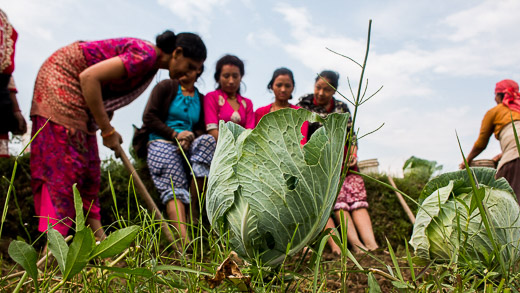
There you will most probably stay at a local home, help them prepare dinner freshly picked from their organic garden, and go around the small town with one of their family members. And top it all off, at Panauti you not only experience the charms of an old township but will also get to experience a bit of agrarian Nepal and enjoy first class hikes in the forests nearby.
When to go to Panauti??
Panauti at 1,450 masl sees rather moderate temperatures throughout the year.
January/February can be cold but not intolerably so. However, throughout this time the views are pretty clear and hikes to close by hills like Balthali, Namo Buddha and Dhulikhel can be quite rewarding.
March/April sees blossoms and greenery with very pleasing temperatures and great mountain views without the dramatic fog that characterizes Jan-Feb.
May/June is when the village life comes together for the plantation season and also the fabulous Panauti Jatra.
July/August is when the entire village erupts in post-plantation festivities. It is one of the best periods to interact with the people and get a sneak peek into their lives.
September/October continues the festivities, offers clear post-monsoon skies and amazing temperatures.
November/December continues the dry and clear weather and is a very good time to visit Panauti.
Hence, as you can see Panauti is open all year around, it just depends on what you are looking for. 😉
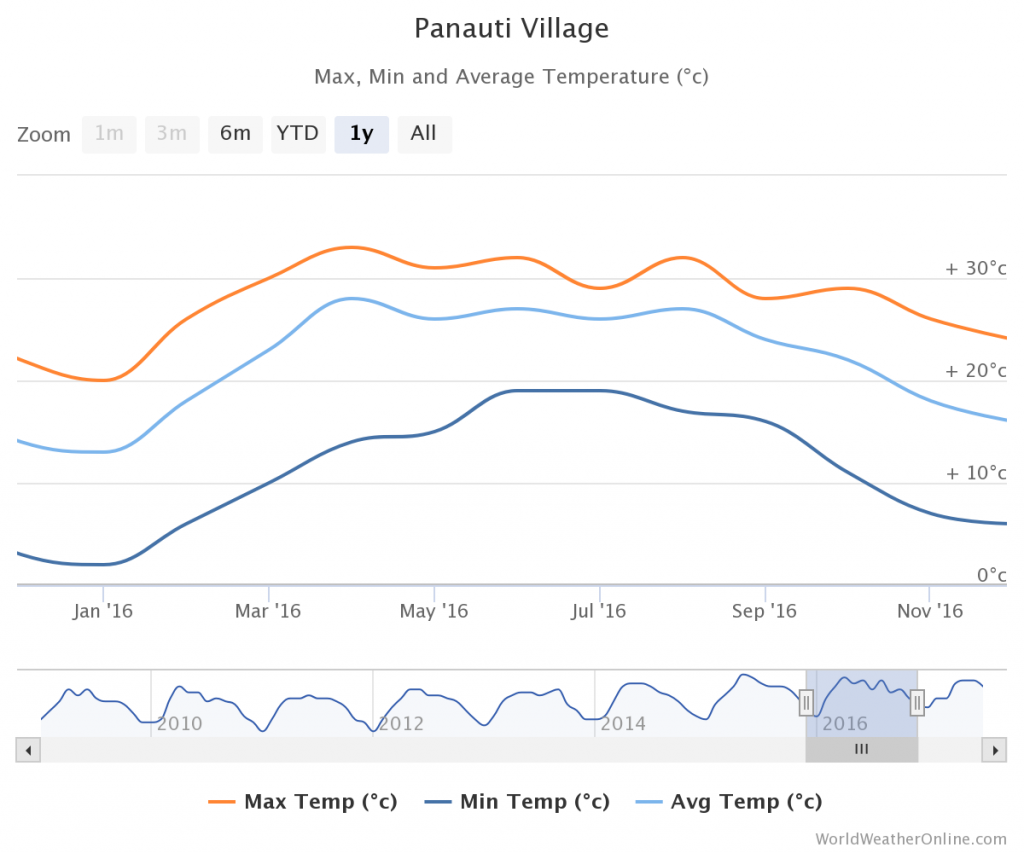
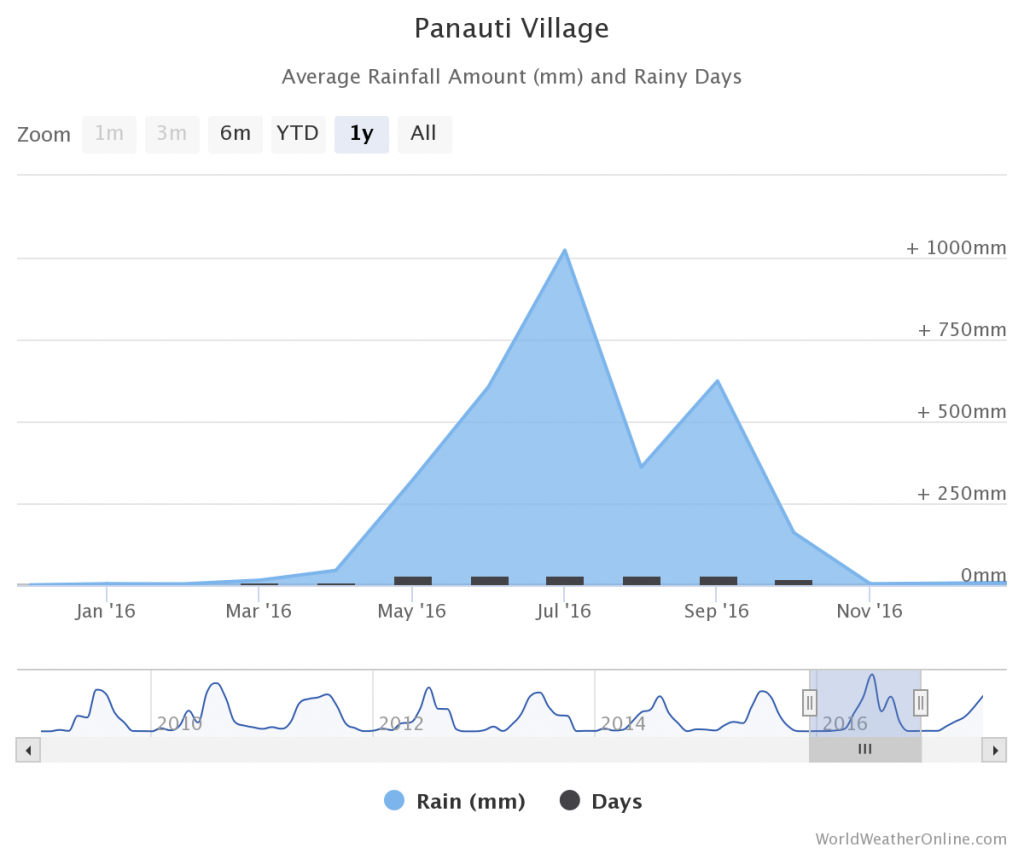
Where is Panauti?
Panauti is close to the Kathmandu Valley, about 34 kilometers to the east. In some way, it is the satellite town of Banepa, a town along the Arniko Highway. It is about 7.5 kilometer due south from Banepa. Here is a bird’s eye view of the quaint town.
As you can see Panauti is at the confluence of the Punyamati River to the north and Roshi river to the south. And as the legend goes there used to be a third mystical river Lilawati that also merged here. Hence, the confluence at Panauti is actually called a Tribeni which literally means the confluence of three rivers. Another really interesting thing about the location of Panauti is that supposedly it is built on top of a single piece of rock. And as locals claim, this is the reason why this village is earthquake proof. And to be fair, given that nothing happened to this town during the 7.8 magnitude earthquake of 2015 or the 8.4 one back in 1934, there is some truth to the claim. Locals love to boast that, ‘not even a tile fell in our town during these earthquakes’. However, all this makes sense geologically too as the shockwaves of an earthquake pass through rocks faster without creating waves. Since it is the waves that create the most destruction, areas that stand on a solid rock are safer. Also apparently to ensure that people do not mine this rock to make utensils, there is a traditional belief that one should not use stone tools in Panauti!!
How to get to Panauti?
Vehicles from Kathmandu
In order to get to Panauti, you could take a bus from Old Bus Park in Kathmandu. It will cost you 1-2 hours and about NPR 60. Once at the bus stop, you enter the old town through the gate of sorts that is towards the southern part of the bus stop. Another way to get there is to take a cab or hire a vehicle. A cab is going to set you back by NPR 2,500 and a private vehicle hire will cost about NPR 3,000 for 4 hours.
Vehicles from Bhaktapur
It is also possible to combine a tour of Bhaktapur with a trip to Panauti. If you are coming from Bhaktapur, you can catch a bus going to Banepa/Panauti at Jagati. It will cost you NPR 30 to Banepa and from here you can hop on another bus to Panauti for NPR 20. However, if you do manage to get a bus to Panauti it is going to be NPR 30. Or if you want to cab it up from Bhaktapur, it will cost you about NPR 2,000. Do bargain and bargain hard.
Cycling/Motorbiking from Kathmandu
If you are motorbiking from Kathmandu, the best way to get there is via the Arniko Highway. However, for those wanting to cycle in, there is this alternative path via Lakuri Bhanjyang which will be an adventure on its own. And while motorbiking is possible on this dirt road, it can be a bit tricky at places especially around during the rainy season. Click the link to see the route from Thamel. However, rather than cycling all the way through the busy Kathmandu streets, you can have the bikes dropped off at Lubhu. From here it is a pleasant ride all the way till Panauti. Also, there are local eateries at Lubhu and Lakuri Bhanjyang, so you will not need to carry food.
Where to stay and eat at Panauti?
Since we haven’t stayed at all of these places, we do not want to recommend one over the other. Please find the following list and decide for yourself and do let us know what you thought of these places once you visit them.
Panauti Community Homestay
This is a homestay run by the local women’s group and supported by Royal Mountain Travel. However, please note that the homes are about 5 minutes walk from the main town and close to the cultivations which to be fair adds a lot of charm and character to the locality.
https://www.communityhomestay.com
Contact Persons
Shila Amatya
Email: amatyashila1987@gmail.com
Phone Number: +977-11-441015; +977-9849318778
Ram Prasad Shrestha
Phone Number: +977-9808059608

Panauti Tourism Development Committee
This organization has about 30 homestay rooms in total and all of them are located inside the main town.
Here is the contact information for the organization:
Nawadurga Dabali, ward no.7, Panauti
GPO Box no. 8616, Kathmandu Nepal
Email: welcomepanauti@yahoo.com
Mobile : +977-9851008628
Contact Persons
Suresh Sainju
Email: sureshsainju@hotmail.com
Phone Number: +977-11-440093; +977-9841224940
Rajaram Karmacharya
Email: rajkarma.panauti@gmail.com
Phone Number: +977-9841360750
Ananda Cafe and Guest House
Ananda Cafe is one of the first facility to cater to travelers in Panauti and is centrally located close to the Indreshwar Complex. However, the place only has three rooms right now and the whole area has a rather unkempt look to it. You can read more about the place here- http://panauti.nepal.urfree.info/ananda-cafe.html
Contact Information:
Phone Number: +977-6211924
Hotel Panauti
This is easily the largest establishment in Panauti and is located at the western end of the old town.
Contact Information
Phone Numbers: +977-11-440055; +977-11-440469
Dharma Narayan Sonam
Phone Number: +977-9841416526
Yadav Narayan Sonam
Phone Number: +977-9841416548
V-Sign Guesthouse and Restaurant
This fairly new establishment is located close to the Bus Park on the road to Namo Buddha.
Contact Information
Phone Number: +977-011-441001
Mobile No:+977- 9803319430
Cafe Lampati
This cafe and bar is pleasantly located on top of an old sattal at the western end of the old town.
History of Panauti
Why does Panauti exist?
Panauti was a trading hub along the ancient Salt Trade route between Tibet and India. Actually, the recorded history of Panauti goes back to the first century AD. However, with the end of the Salt trade in the 1950s and the construction of the Arniko Highway in the 1960s bypassing this old town, Panauti has gone into an economic rut. But on the bright side, that is perhaps one of the reasons Panauti still has that old world charm to it compared to the nearby highway town of Banepa.
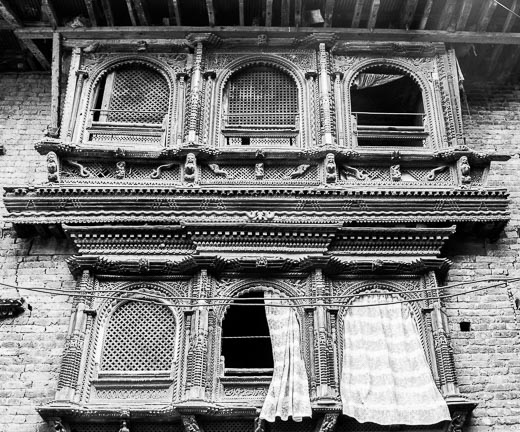
Why is Panauti called Panauti?
There are various stories about Panauti got its name. However, here is one that might make ‘some’ sense. In Newari language ‘Pa’ mean bamboo, ‘La’ means a rock and ‘Ti’ means a place of pilgrimage. Hence Palati which through the wear and tear of the ages eventually become Panauti.
Where to go for sightseeing in Panauti?
Indreshwar Mahadev
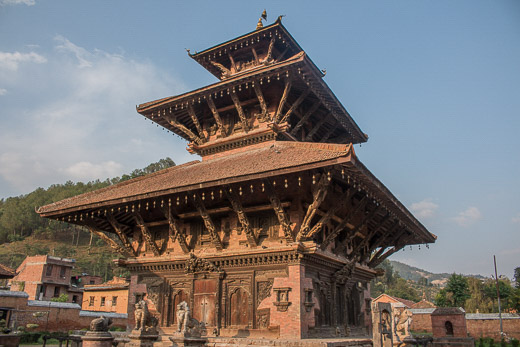
This three storied pagoda dedicated to Lord Shiva is located inside a beautiful courtyard at the eastern end of town. The courtyard is an absolute gem where you can breathe in 13th-century artwork and quiet solitude. Perhaps an occasional pilgrim from South India draped in yellow will pass by, or some local passerby, but you will mostly be left to yourself at this quiet oasis.
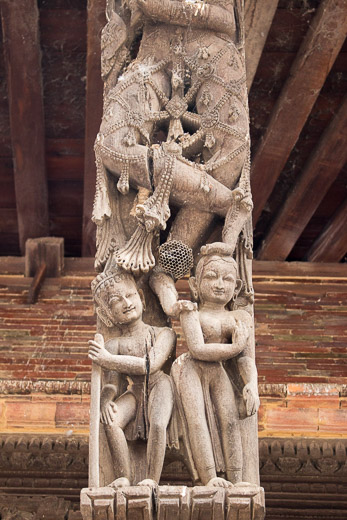
If you look at the temple carefully, you will perhaps notice that the struts holding the pagoda are different from the struts in other temples of Kathmandu. In most other temples, the arms of the gods that adorn the strut jut out from the wooden frame. However, in this temple, the arms are all contained within the strut itself. And that is how you know that this temple dates back to the 13th century CE. Some even claim that the Indreshwar Mahadev temple is the oldest temple in all of Nepal. Oldest or not, one other difference you will notice is that at the base of the strut are couples in romantic postures as opposed to erotic ones that can be found in later temples. And since foreplay comes before real action, it is very likely that the temple came before the others (no pun intended of course).
Interestingly, the origins of the temple are also rooted in a sexual act and a ridiculous one at that. As folklore has it, Indra, the king of Gods, was smitten by Ahilya, wife of a famous sage Gautam. Yes, Hindu sage’s had wives, and their gods sometimes had a very high libido. So obsessed did Indra become that one night when the sage was away, he slipped into her bed disguised as the sage himself. Once there, they did what men and women do when they sleep in the same bed. But as fate would have it, the sage returned while his wife and Indra lay in an amorous embrace. While normal people would beat the s#%t out of the offender, remember that we are not talking about normal people here. The sage even when seething with anger had an awesome prank up his sleeve. He cursed Indra and a thousand vaginas appeared all over his body. A thousand vaginas for someone who was just after one!! That sure is as awesome as pranks get. And to get rid of the thousand vaginas in his body, Indra had to meditate for twelve hundred years worshipping Lord Shiva. No sweat, it is just twelve hundred years. At the end of it, Lord Shiva happy with Indra’s dedication blessed him so that the vaginas disappeared. Relieved thus, Indra decided to create a temple for Lord Shiva. Thus, the Indreshwar Mahadev Temple was erected.
Unmatta Bhairava Temple
To the south of the Indreshwar Temple inside the same courtyard is the temple dedicated to Unmatta Bhairava. Now the fierce looking Bhairava is a deity indigenous to the Kathmandu Valley and predates Hindu and Buddhist infiltration. As Hinduism Inc increased its influence and started acquiring local gods, Bhairava is now considered a subsidiary/incarnation of Lord Shiva.
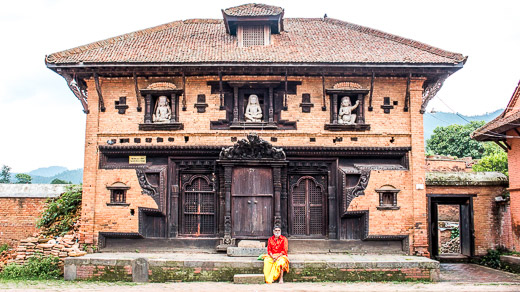
This particular temple is dedicated to the Unmatta or aroused state of Bhairava. And by aroused we do not mean awake, we mean sexually aroused. And while it isn’t easy to tell whether the statue is actually aroused as there is usually a white skirt draped around that part, rest assured that there is a monumental erection underneath. The main statue is located at the eastern end of the temple with the statue of nine goddesses lining the southern wall inside.
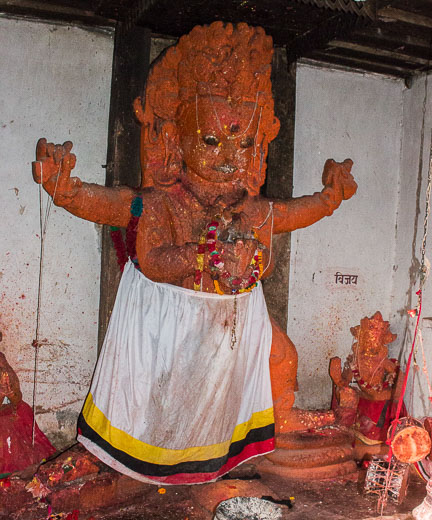
However, the most distinctive feature of the one storeyed temple is the three human figures that are placed at each of the windows on the first floor. They are variously described as Kings, Saints, or even devotees. Have your pick, it will not stop the figures from lending the temple that quaint and quirky look.
Tula Narayan Temple
To the east of the main Indreshwar Mahadev temple, lies the temple of Tula Narayan. It is dedicated to Narayan, the God that sustains the universe. The highlight of this temple is the nine feet tall statue of Narayan carved in smooth black stone. This beautiful statue dates back to 1382 AD when King Jaya Singh Ramavardan is said to have constructed this temple along with performing a Tuladan, an offering of gold to the gods equal to your body weight.
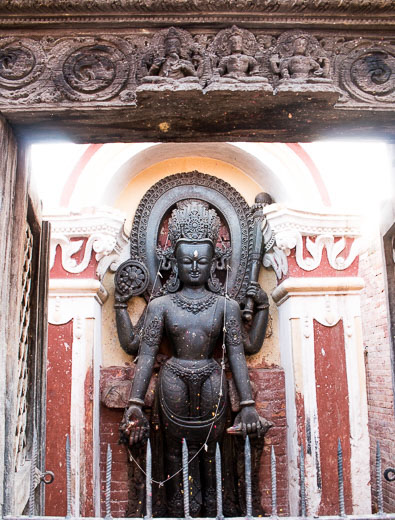
Panauti Museum
A lot of the statues and artwork from Panauti is no longer in Panauti. While the bigger temples are usually protected, there are hundreds of lesser temples that are easy prey for thieves. Panauti Museum was established by the local people in 2011 in order to provide a roof for smaller artifacts to keep the artifacts safe.

Bansha Gopal Temple
Bansha Gopal Temple also known as Krishna Temple or Radha Krishna Temple, is situated at Triveni Ghat, the confluence of rivers at the eastern end of the town. This three storeyed temple is dedicated to Lord Krishna, who among a lot of other good things is most popular for his sixteen thousand girlfriends, eight wives, and one true love. He is also known for the pranks, one of which is depicted in the wall close to this temple. This prank is called Bastra Haran in which Lord Krishna took the clothes of women who were taking a bath in a nearby river and carried them off to a tree. As the women urged Krishna to give back their clothes, he asked each of them to come out of the river and take their clothes one by one. Not seeing much of an option, each of the women or Gopis as they are called came out one by one and stood nude in front of Krishna upon which he gave their clothes back. Again, there are various interpretations to this prank. There is the one which notes that since the Gopis coveted Krishna and wanted to marry him, this was his way of marrying all of these women without actually marrying them, for a woman only stands nude in front of her husband. If that sounded a bit ridiculous, the other interpretation is that this was Krishna’s way of teaching the Gopis not to go into the river naked. Whatever the interpretation, we can be sure that had Krishna pulled off the prank now, it could land him in jail.
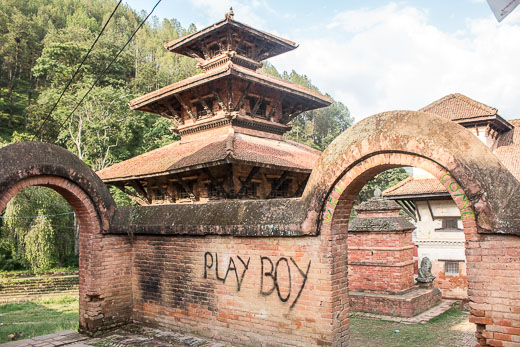
Brahmayani Temple
Across the river from the Bansha Gopal temple is the temple dedicated to Goddess Brahmayani, one of the Mother-Goddesses of the Kathmandu Valley. She is also the presiding goddess of Panauti and during the Panauti Jatra, she gets a private chariot.
As you go inside the temple, you will possibly find that instead of a central deity or a statue, it is just a seemingly random collection of small statues loosely protected. Also, the door to this temple is always kept open. This is the case with all temples dedicated to Mother-Goddesses especially those associated with Tantric rituals. As they say, these deities have to be in contact with the natural elements.
Bhadrakali Temple
This temple dedicated to fierce goddess Bhadrakali is located in the central part of town and isn’t exactly easy to find in the narrow alleys of Panauti. It is situated in a Bahal, or traditional Newari courtyard, right beside regular homes. While its location seems rather homely, Bhadrakali is a deity as important to Panauti as Indreshwar Mahadev, Unmatta Bhairava, and Bhramayani. During the Panauti Jatra, chariots of all four of these deities are pulled, but more on that later.
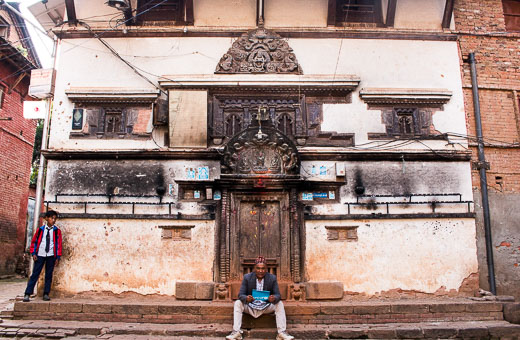
Pashupati Temple
This Shiva temple in the middle of Panauti is built in the Shikhara style. This style of architecture while present in many places of Kathmandu is historically associated with Dravidian architecture. While Dravidians are currently limited to South India and Sri Lanka, their range presumably used to stretch all the way up north till the Himalayas.
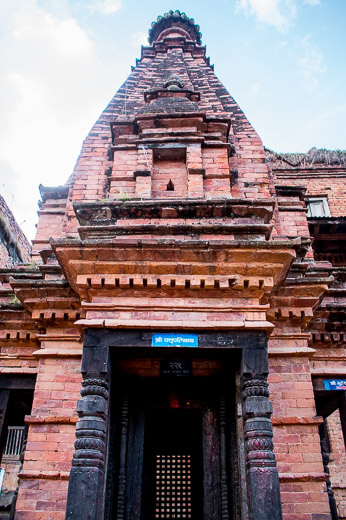
Layaku Durbar
Layaku Palace, or what remains of it, is a playground for kids and is basically an archaeological remain. Legend has it that this is a place where the royal palace of Panauti used to be but since Panauti hasn’t had its own kingdom for a long long time, this area has obviously fallen into disuse and has very little to offer now.

Patis and Sattals
Patis or Sattals are public resting places and Panauti has quite a few of them. These used to be local hang out spots which doubled as resting places for pilgrims and merchants visiting Panauti. Some of the more popular ones standing today are Sohrakhutte Pati, Laam Pati, Ghat Sattal.
Other Temples
In addition to the famous temples mentioned above, Panauti has a lot more. If you are dead set on seeing all of them then here is a list: Jaleshwor Mahadev, Badri Narayan Temple, Dhaneshwor Mahadev Temple, Ram Temple, Kedarnath Temple, Mukteshwor Mahadev Temple, Maneshsori Temple, Gorakhnath Temple, Madhav Narayan Temple, Sankat Narayan Temple, Shitala Mai Temple, Batsaladevi Temple, Matya Narayan Temple, Basuki Naag, Panchamukhi Mahadev, Bhagwati Temple, Kaathganesh Temple, and Dharmadhaatu Mahabihar.
Festivals and Jatras of Panauti
12 year Makar Mela
The folklore of Indreshwar Mahadev is closely tied to this twelve-year festival. The place where God Indra got rid of a thousand vaginas obviously deserves widespread fame and people come from far and wide to see if they can rid themselves of, well not vaginas, but sins. Whatever the folklore, the number of people who throng to Panauti during this festival is phenomenal. The next edition of this festival will be held in 2022, 15 January to 12 February.
Panauti Jatra (Jya Punhi Jatra)
This carnival is the most colorful of the Panauti festivals. It is known for its wild merrymaking, chariot clashes, and multi-day feast. And the most interesting part of the festival is that it is inspired by some wild freaky sexual encounter of the gods.
As the story goes, Lord Shiva wanted to check out Lord Krishna’s character and hence asked him if he could take one of his wives. To this Krishna simply said yes with the condition that Shiva only takes the wife he is not sleeping with at that moment. Content, Lord Shiva goes to the room of the first wife and finds Krishna there, to the second room to find Krishna again, and then to the third room with the same result again. Even after going through all the rooms, Lord Shiva doesn’t get lucky!! When his consort Parvati hears about this, she decides to test out Lord Shiva. For this, she takes the form of 64 Yoginis who are very aroused and desirous for sexual satisfaction. In this form, she runs after Lord Shiva, who apparently runs away from the 64 horny women and hides close to the Triveni Ghat at Panauti. As the 64 yoginis keep waiting for Shiva, he takes the form of the Unmatta (aroused) Bhairava and comes out of his hiding place ready for feisty consummation. At this violent form of Lord Shiva, the 64 yogini gets scared and change their form to Bhadrakali, the fiery form of Parvati. So now we have the ferocious Unmatta Bhairava chasing a fiery Bhadrakali. As she reaches Layaku Dabali, Bhairab catches up with her and has sex with her three times from behind (doggy style perhaps). As the two lie satiated in sexual bliss, Bhadrakali changes her form to Parvati and expresses her wish to have sex with Lord Shiva in their real forms. Then both change their forms and go at it three more times, but this time from the front (yes missionary this time around). In line with this story, on the last day of the three-day festival, the chariot of Bhairava clashes with that of Bhadrakali from behind, well you guessed it, three times. And after this clashing, the chariot of Indreshwar Mahadev (Lord Shiva) clashes with the chariot of Bhadrakali three more times, this time from the front.
https://www.youtube.com/watch?v=jcUa9jpA2OY
Even though the last day is the most exciting part of the festival, there are other days with perhaps less glamorous events. Here they are:
Day 0 (3 days to the full moon) is called Dha Kwacha Bijyaigu. In this day, the two goddesses Bhramayani and Bhadrakali are brought out from their regular secret room to an open room.
Day 1 (2 days to the full moon) is called Duicha Ngayakegu or Kulakya after the slow and methodical walk that the priests undertake as they carry the idol of Bhramayani across the river from her house to her temple in Triveni Ghat.
Day 2 (1 day to the full moon) is the day of Mul Jatra during which there is a lot of feasts and festivities along with the procession of Lord Ganesh, the elephant-headed God.
Day 3 (full moon day) is the main day of the festival with the chariot crashing and wild merrymaking.
If that sounded intriguing here are the dates for the next five years for this festival: 2018 26 May-29 May; 2019 15 May-17 May; 2020 3 June-5 June; 2021 22 May- 24 June; 2022 12 June- 14 June.
Devi Naach
These colorful dances represent the victory over the forces of evil. These dances also coincide with the national festival of Dashain with the same theme and consists of masked performances of Bhairab, Mahakali, Barahi, Kumari, Ganesh, Maheshwari, Bhramayani, and Indrayani. The dance is shown in the Indreshwar complex, Bhramayani Dabali, and Lampati.
Here are the dates if you are interested in this festival
Dates: 2017 21 September- 30 September; 2018 10 October- 19 October; 2019 29 September- 8 October; 2020 17 October- 26 October; 2021 7 October- 15 October.
Yomari Punhi
Usually falling around the winter solstice, Yomari Punhi is a Newari festival that is said to have originated in Panauti. It is celebrated by preparing a traditional Newari sweet called Yomari. Now Yomari is a steamed dumpling made of rice flour with chaku, a sweet brownish stuff made from sugarcane, ghee, and nuts. High in calories, it is great for warming up the body during the dead of winter. The shape of the yomari with the tapering end is also said to signify the fact that from Yomari Punhi onwards days will start to get longer however slowly, just like the tapering edge of the yomari.
Here are the dates for this festival: 2017 3 December; 2018 22 December; 2019 12 December; 2020 30 December; 2021 19 December.
Namobuddha Jatra
The story behind Namobuddha is related with the original Buddha. After enlightenment, Gautam Buddha took a tour of Lumbini, Swayambhu, Panauti and Sankhu Gandhamadan Parbat (currently called Namobuddha). Once there, the Buddha’s eyes are said to have fallen upon a stupa-shaped rock. Upon examining it for quite some time, he went up to the mound and joined his hand in a Namaste gesture to pay homage to it. Hence the name: Namobuddha.
The Buddha explains his affinity to the mound thus, “Once upon a time a great Prince Mahasattva from Panchal Country (Panauti) had come to this forest on a hunt with his father and two brothers. As fate would have it the prince got separated from the rest of the group and came across a tigress with five cubs. However, the tigress was weak with hunger and was no position even to raise her head, as the cubs tried in vain to suckle. Seeing the animals in such a desperate state, the compassionate Prince did something extraordinary. He chopped off his own flesh and started to offer it to the hungry tigress and her cubs. And that Prince Mahasattva was my earlier incarnation.” Hence, even though the prince was born in Panauti, it was at Namobuddha that he made the ultimate sacrifice. Hence it is here that the prince still resides for the rest of the year.
But during this Namobuddha festival, the main statue of Namobuddha is brought to Panauti from Sankhu Namobuddha and kept in Bansa Gopal Krishna Mandir in Triveni Ghat. Here, the MahaSattva along with two Dipankar Buddhas Ajaju and Ajima are paraded around the city and welcomed to his original home close to the Layaku Dabali.
The dates for the festivals are thus: 2018 7 September; 2019 28 August; 2020 17 August; 2021 5 September; 2022 25 August
If you are interested in other lesser festivals here is a more comprehensive list:
| Festival Name | Month | Place |
| Bhramayani Worship | Every Saturday | Triveni Ghat |
| Bel Bibaha | April/May | Triveni Ghat |
| Sithi Naakha | May/June | Triveni Ghat |
| Desh Puja | June/July | Triveni Ghat |
| Gathemangal | July/August | Triveni Ghat |
| Dhalchabhajan | July/August | Triveni Ghat |
| Bibika Devi Puja | July/August | Pasthali Ward-No 9 |
| Sansari Devi Puja | July/August | Pasthali Ward-No 9 |
| Gunla Baja Parikrama | July/August | Triveni Ghat |
| Gai Jatra | August/September | Triveni Ghat |
| Janai Purnima | August/September | Triveni Ghat |
| Teej | August/September | Triveni Ghat |
| Chotha Parva | August/September | Triveni Ghat |
| Devi Naach | August/September | Triveni Ghat |
| Phulpati | September/October | Triveni Ghat |
| Devi Naach | September/October | Triveni Ghat |
| Swataki Parva | September/October | Triveni Ghat |
| Daafa Bhajan | October/November | Triveni Ghat |
| Bhramayani and Kaath Ganesh Puja | October/November | Triveni Ghat |
| Mahalaxmi Puja | October/November | Triveni Ghat |
| Sakimana Purne Parva | October/November | Triveni Ghat |
| Dhaneshwor Mela | November/December | Kushadevi, Ward No 2 |
| Dhanya Purne | November/December | Triveni Ghat |
| Salle Devi Worship | November/December | Salle |
| Maaghe Sanktrani | January/February | Panauti Town |
| Jaleshwor Mahadev Puja | January/February | Ward No 12 |
| Madhav Narayan Puja | January/February | Triveni Ghat |
| Barha Barse Mela | January/February | Triveni Ghat |
| Shiva Ratri | February/March | Triveni Ghat |
And then here is the list of Jatras:
| Name of Jatra | Time | Place |
| Navadurga Jatra | April/May | Triveni Ghat |
| Buddha Jatra | April/May | Triveni Ghat |
| Ranganath Bhagawan Jatra | April/May | Khopasi |
| Panauti Jatra | May/June | Triveni Ghat |
| Chilakh Jatra | May/June | Triveni Ghat |
| Bhimsen Jatra | August/September | Khopasi |
| Krishna Jatra | August/September | Triveni Ghat |
| Bhimsen Jatra | August/September | Triveni Ghat |
| Namo Buddha Jatra | August/September | Triveni Ghat |
| Narayan Jatra | August/September | Malpi |
| Krishna Jatra | August/September | Triveni Ghat |
| Krishna Jatra | August/September | Chaukot |
| Taleju Jatra | September/October | Triveni Ghat |
| Bhamayani Jatra | September/October | Triveni Ghat |
| Siddhi Binayak Jatra | September/October | Triveni Ghat |
| Bhimsen Jatra | September/October | Chaukot |
| Khadga Jatra | September/October | Triveni Ghat |
| Mahalaksmi Jatra | October/November | Triveni Ghat |
| Ganesh Jatra | October/November | Triveni Ghat |
| Kaath Ganesh | November/December | Triveni Ghat |
| Ganesh Jatra | November/December | Majh Gau |
| Maneshwori Jatra | January/February | Triveni Ghat |
| Bhimsen Jatra | January/February | Triveni Ghat |
| Sankata Jatra | February/March | Triveni Ghat |
| Bisket Jatra | March/April | Chaukot |
| Nawa Durga Jatra | March/April | Chaukot |
| Harisiddhi Jatra | Triveni Ghat |
What are the side trips from Panauti?
Namo Buddha
Hiking or mountain biking to Namo Buddha can be a pleasant introduction to rural culture and nature. It takes about 6 hours to get to Namo Buddha from Panauti of you are hiking and about 3 hours if you are cycling.
Hiking information: http://www.everestuncensored.org/hiking-panauti-namo-buddha/
Khopasi
Khopasi is about 3 kilometer to the south-east from Panauti and is famed for an 8th-century inscription and a hydroelectric project is another quaint town frozen in time. A walk to Khopasi can easily be combined with a Namo Buddha hike.
Balthali
Beyond Khopasi is the small village of Balthali which is famed for the picturesque Balthali Village Resort and rustic rural surroundings and offers some stunning mountain views.
_____________________
HoneyGuide was part of the International Travel Bloggers and Media Conference organized by PATA-Nepal Chapter and Nepal Tourism Board. The stay at Panauti was funded by these organizations. If you love this detailed article on Panauti, you will also love our detailed guide to Everest Base Camp Trek.







